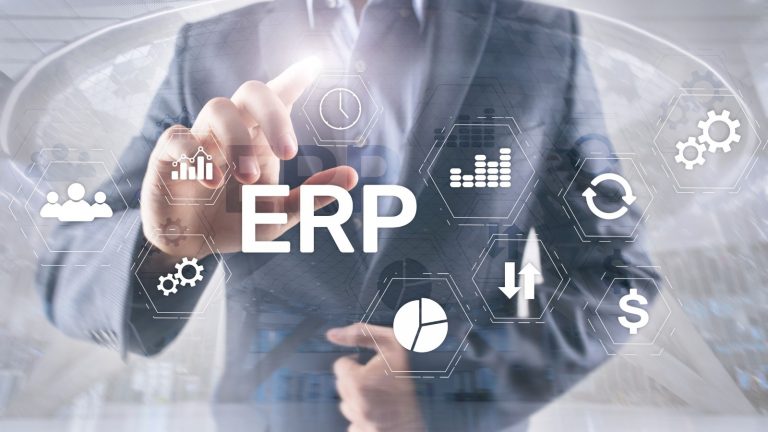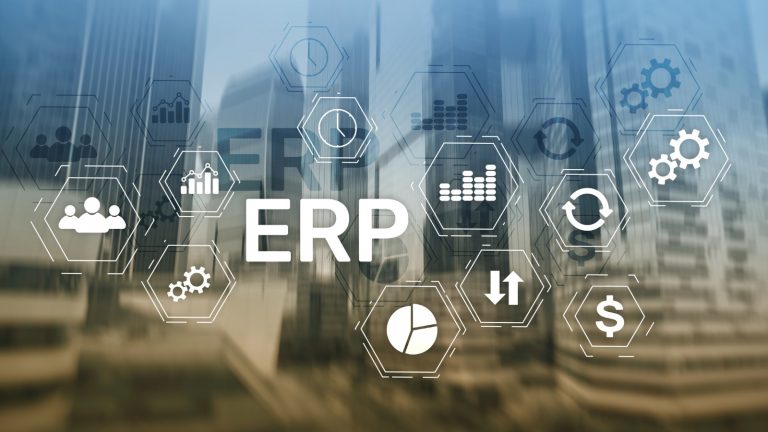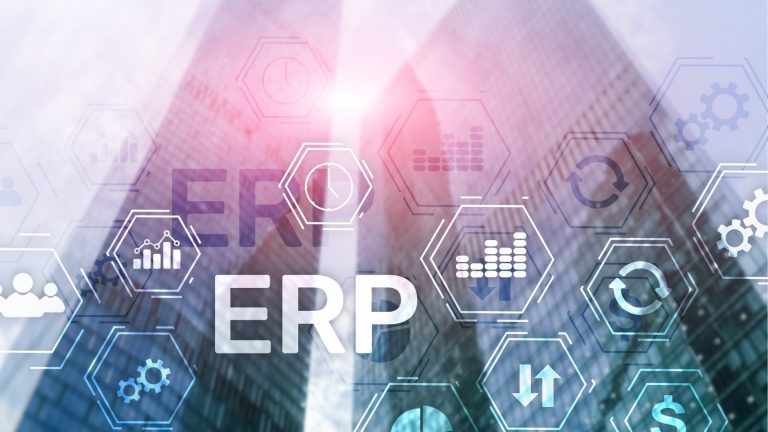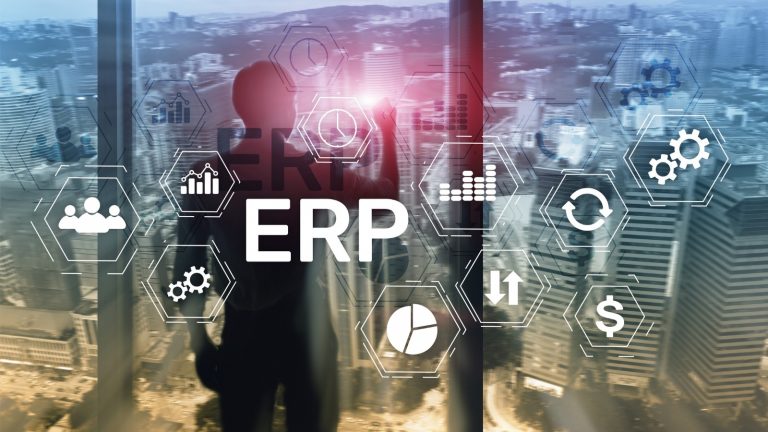Within the past decades, the business context in Singapore has changed a lot due to dynamic market fluctuations. We know that Singapore is a country where they put a lot more attention to technology, and since the 2000s, they have been taking bigger steps to connect technology and the business world for better outcomes. The newest trend or enthusiasm in Singapore is employing business automation and ‘Enterprise Resource Planning’ (ERP) software in operations.
What exactly is automation? What can ERP do for the business world? Why does Singapore need automation and ERP? This article will reveal everything about this to you.
We will look into
What is Automation?

- This refers to the process of employing technology and systems to perform tasks or processes with minimal human intervention. It means the use of software, machinery, or other technologies to execute repetitive, rule-based, or predefined actions, replacing usual manual efforts.
- When you have employed automation, tasks such as data entry, scheduling, production, or decision-making can be carried out autonomously, faster, and with reduced errors.
- This technology aims to expedite workflows, enhance efficiency, and allocate human resources to more complex or strategic activities.
- Another outstanding feature is that automation spans various industries and functions, backing up their unique operations and driving advancements in productivity and innovation.
What is an ERP System?

- As the title of this blog article suggests, let us explain what ERP is. This software integrates various business processes and functions into a centralised system. It provides a unified platform for managing core operations.
- It usually comes out with a diverse range of modules for finance, human resources, supply chain, inventory, customer relationship management (CRM), and more. It is more like everything under one roof.
- Now, we will focus on the mechanism of ERP as these systems conduct data sharing and collaboration across departments. This is the basic functionality, along with enabling real-time visibility into business activities, improving decision-making, and enhancing overall efficiency.
- Automation is closely intertwined with ERP systems, as these platforms often incorporate automation capabilities. Automation within an ERP system means using technology to execute routine tasks, data entry, report generation, and workflows automatically.
- If you are still confused, look at this example. Think of a scenario where ERP automation can handle inventory management, order processing, or financial reporting, which simplifies operations and reduces manual efforts. This integration of automation within ERP systems helps optimise processes, minimise errors, and boost productivity by automating repetitive tasks across the organisation. On the other hand, it expedites the overall workflow; on the other hand, it boosts visibility in various aspects through one platform, saving time and money.
Top Benefits of Automation and ERP Systems for Singapore

Enhancing Efficiency and Productivity
When you are embarking on an adventurous business journey, what you mainly focus on is boosting efficiency and productivity. With the competition in the market in Singapore, you have to expect this in a way that you can match the levels of your competitors. Otherwise, you will lose the chance to stay relevant in the Singaporean business landscape.
The synergy between automation and ERP systems energises you to significantly enhance efficiency and productivity across businesses.
Let us explain how this is possible. Automation within an ERP framework empowers organisations by automating repetitive tasks, such as data entry, order processing, and inventory management, reducing manual errors and speeding up operations. This integration optimises workflows, streamlines processes, and ensures consistent and standardised procedures across all departments. Since the powerful technological capabilities help automate routine operations through the ERP system, employees are freed from heavy tasks, allowing them to focus on more strategic and value-added activities.
This increased operational efficiency not only minimises human error but also accelerates task completion, which has an outstanding impact. It will result in heightened productivity, improved resource allocation, and ultimately, a more flexible and competitive business environment.
Inventory Optimisation
The number one challenge you encounter during your journey on the business path is handling inventory or stocks promptly. Since Singapore places more value on quality than quantity when it comes to business outcomes, you have to take care of this by giving more attention to each aspect of the inventory. However, businesses do not need to worry too much about this matter, as the automation powers hidden in the ERP software will handle this for you smoothly.
Automation and ERP systems revolutionise business inventory optimisation by offering real-time insights and automated controls over inventory management processes. Automation within the ERP streamlines inventory tracking, ensuring accurate data on stock levels, demand forecasts, and order fulfilment.
You know that ERP can automate tasks such as replenishment, stock tracking, and supplier communications in real time. This capacity minimises human errors and ensures timely stock refills, reducing stockouts or excess inventory. This integration clears the road for you to embark on proactive decision-making by providing data-driven insights. This powerful technological fusion helps you optimise inventory turnover and align stock levels with demand patterns.
As you can see, the combination of automation and ERP empowers businesses to maintain leaner and more efficient inventory operations. Plus, it assists in reducing carrying costs, improving order fulfilment, and enhancing overall supply chain efficiency.
Cost Efficiency
How can you expect good revenue when you have to pay a lot more for the requirements than you estimated? This is where these two technological advancements synergise to drive cost efficiency within businesses by streamlining operations, reducing manual labour, and minimising resource waste. Automation embedded within the ERP system encourages you to automate repetitive tasks across departments. This is a way to go when eliminating manual errors and accelerating processes such as data entry, invoicing, and inventory management.
This saves time and optimises resource utilisation, reducing labour costs and mitigating the risk of errors that come along with manual tasks. Since this backs up efforts to provide real-time insights into operations, the ERP system helps with informed decision-making, allowing businesses to identify cost-saving opportunities, negotiate better deals with suppliers, and optimise inventory levels, which are impressive benefits.
This comprehensive strategy for using automation and ERP systems results in considerable cost savings, better operational effectiveness, and a stronger competitive advantage for businesses in Singapore.
Standardising Processes
This is an outstanding way to standardise business processes by establishing uniformity and consistency across various operations.
The ERP framework’s automation stimulates the development and implementation of standard operating procedures, which ensure that data input, workflows, and transactional operations meet established standards.
The system lowers changes, faults, and variations in operations by automating repetitive processes and implementing specified procedures. This consistency builds an overall culture of reliability and predictability and improves operational efficiency.
The combined power of automation and ERP systems ensures that operations fit with established best practices, encouraging efficiency, lowering risks, and improving overall quality across business procedures through automated controls and specified workflows.
Improved Accuracy
The connection between automation and ERP systems significantly augments accuracy within businesses. This is not that complicated, as the combined power will help mitigate human errors and ensure precision across various operations.
Let us elaborate more deeply. Automation coupled with ERP automates repetitive tasks like data entry, calculations, and reporting, minimising the likelihood of manual mistakes. When it empowers you to standardise processes and makes you go with predefined workflows, the system reduces misinterpretations and inconsistencies in data handling. This ensures a higher degree of accuracy in transactions, inventory management, and financial records.
On the other hand, real-time data integration and automated validations further enhance accuracy by cross-verifying information and promptly flagging potential errors. Ultimately, this seamless integration of automation and ERP systems creates a more accurate and trustworthy working atmosphere inside the company by strengthening confidence in data integrity and decision-making.
Better Decision-Making
Their synergy provides timely, data-driven insights and encourages informed choices across all levels, as we mentioned before. Automation-backed-up ERP easily processes vast amounts of real-time data from various departments, offering comprehensive analytics and reports.
This gives stakeholders access to up-to-date and precise information, helping them to act swiftly and effectively. The technology helps to foresee trends, discover patterns, and highlight potential risks or opportunities by automating regular procedures and providing predictive analytics. This improves the quality and speed of decision-making processes.
This systematic method ensures that all decisions are based on trustworthy facts, providing businesses with responsiveness, adaptability, and a competitive advantage in Singapore’s dynamic and constantly changing market environment.
Aiming for Rapid Development through Automation and ERP

Technology should be utilised in a strategic way to receive the best possible outcome, especially if you are battling in a dynamic market like Singapore. Why do you have to waste money and time on repetitive tasks and unwanted stuff when you can automate them through ERP systems in these modern times? However, you need to align your business requirements with the system you are planning to purchase in the first place. A well-reputed supplier will be the solution to this challenge.





